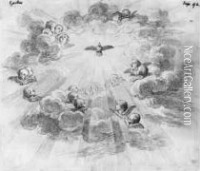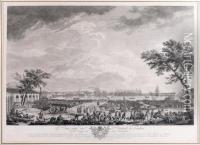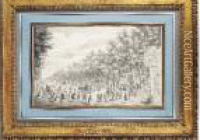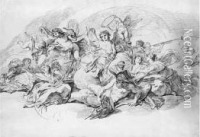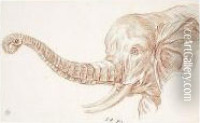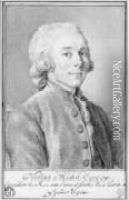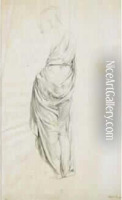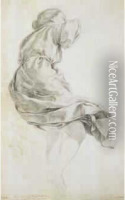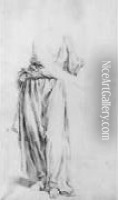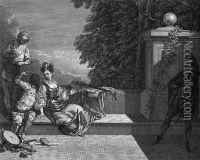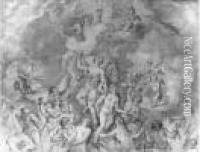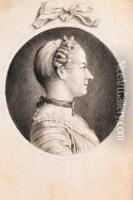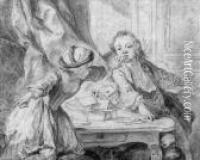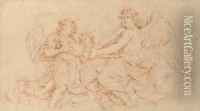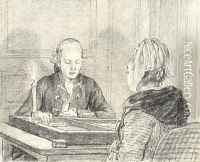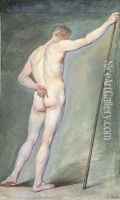Charles-Nicolas I Cochin Paintings
Charles-Nicolas Cochin I was a French engraver, illustrator, and designer who became one of the most important printmakers of his time. Born on February 22, 1715, in Paris, Cochin came from a family of artists. His father, Charles-Nicolas Cochin the Elder, was also an artist and provided his son with early training in drawing and engraving.
Cochin quickly gained recognition for his talent and began receiving commissions from prominent patrons. He became particularly noted for his engravings that reproduced the works of contemporary painters, which helped to disseminate the Rococo style. Cochin also created illustrations for books and was involved in designing decorations for royal festivities.
In 1751, Cochin was appointed Designer and Engraver to the King, which was a significant acknowledgment of his status in the French art world. He was also appointed secretary of the Académie Royale de Peinture et de Sculpture and played a role in the development of the Académie's art criticism and theoretical writings.
Cochin's work was characterized by its elegance and refinement, typical of the Rococo style, with a focus on lightness and grace rather than the dramatic chiaroscuro of the Baroque. He was also known for his skill in capturing the likeness and character of his subjects in his portrait engravings.
Aside from his artistic practice, Cochin was a prolific writer on art, and his letters and essays provide valuable insights into the artistic culture of his time. He was an advocate for the reform of the French Academy and had progressive ideas about the hierarchy of genres in art.
Cochin's influence extended beyond France; his works were collected and admired throughout Europe. He died on April 29, 1790, in Paris, leaving behind a legacy as a key figure in the transition from Rococo to Neoclassicism in French art. His engravings remain important historical documents of 18th-century French art and culture.
